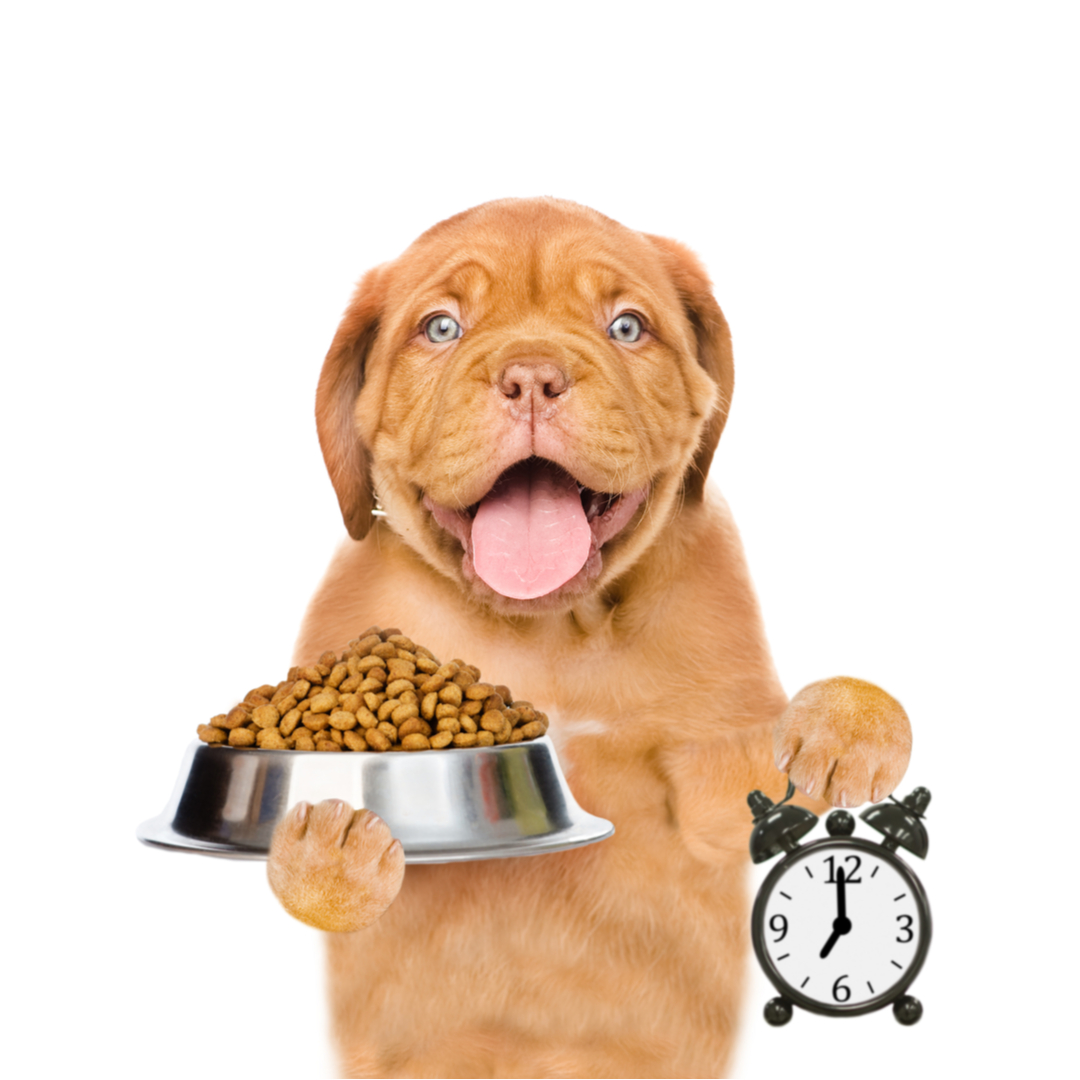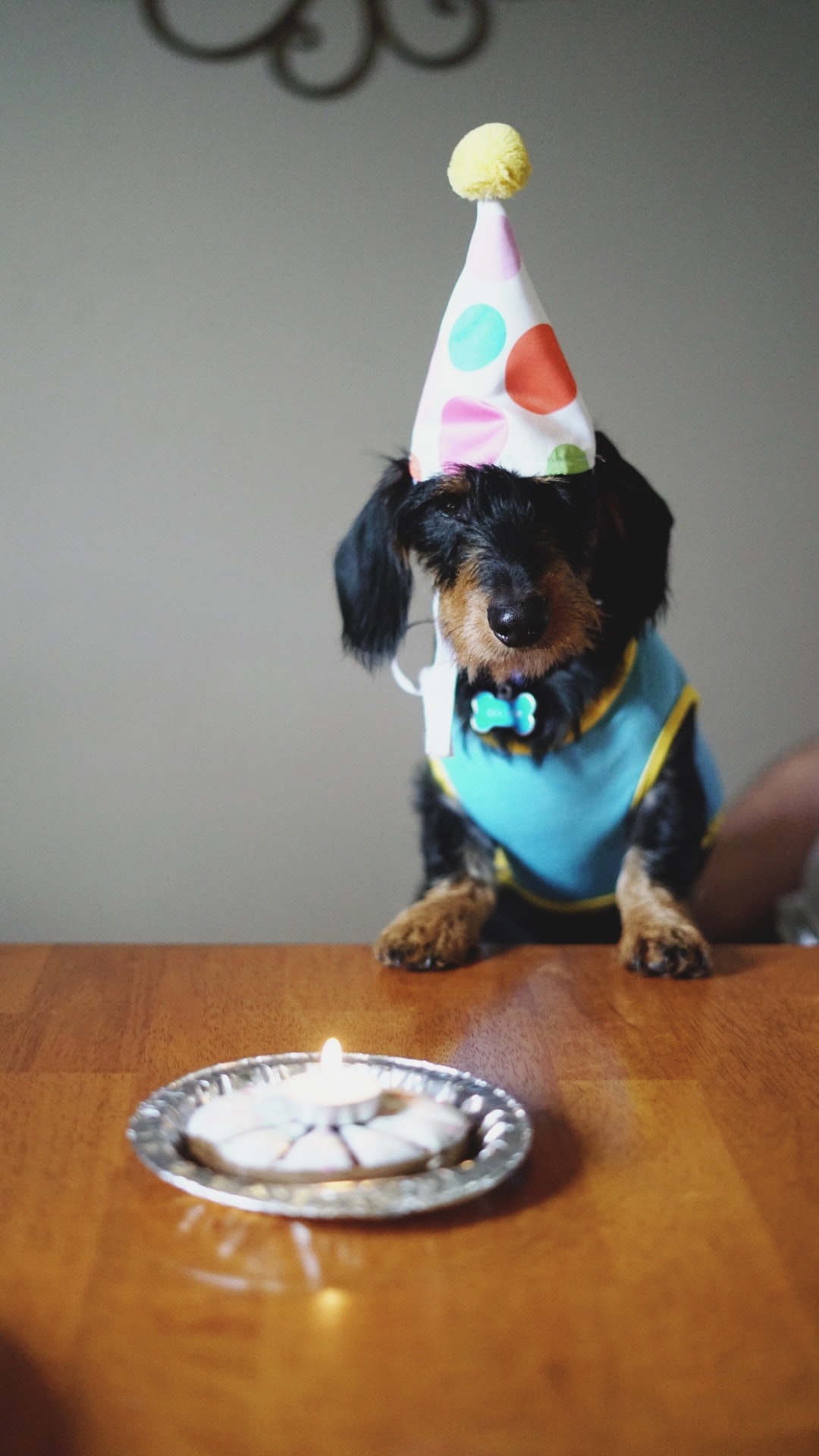Puppy feeding schedule, why free feeding is not the way to go
From 2 to 6 months, an ideal puppy feeding schedule will be 3 to 4 times a day. Puppies at this stage require regular feeding throughout the day for their growing needs which is at odds with their small tummies.
With their small tummies in mind, it’s important to note that feeding more often does not equate to feeding larger amount of food in total. It simply means spreading the daily portion evenly throughout the day for better nutrient absorption and digestion.
From 6 months and beyond daily portions can then be divided into 2 servings.

Benefits of schedule feeding
Schedule feeding means establishing a regular routine of eating and toileting. Left overs are eliminated after 10 minutes.
This regimen helps speed up housetraining through eating and potty on time. Puppies usually eliminate within 20-30 minutes after eating. This quickly becomes a useful pattern that not only benefits training but also in avoiding accidental elimination as well.
Another plus to this way of feeding ensures your puppy consume only freshly prepared food all the time and help prevent juvenile obesity due to over-feeding.
Example of puppy feeding schedule for a 3 months old puppy:
Time Amount per meal Total portion per day
8am ¼ of daily portion 1 ½ cup
12pm ¼ of daily portion
4pm ¼ of daily portion
8pm ¼ of daily portion
The only downside of this is the amount of work and diligence on your part. If you can’t be home for most of the day, make sure family, helper or whoever is doing the feeding stick closely to the schedule.
On the bright side? This is simply a phase and it comes and goes faster than you know. Once your puppy grows big enough (6 or 7 months) you only need to feed her twice a day. Large and giant breeds can cut down to 2 feeds as early as 4 months.
Avoid free-feeding
Free-feeding is the direct opposite of schedule feeding. Food are put and left out for most of the day, allowing puppies to eat at her leisure.
While the obvious and (probably) the only advantage to this is the convenience of preparing and clearing of meal only once per day, the cons are neglecting all the positives schedule feeding has to offer and more!
Measuring and adjusting of food intake is and should be an important ongoing process in maintaining the overall well-being of your dog throughout her lifetime. A process made difficult if you free-feed and impossible if you have multiple dogs.
While there is a general guide on how much to feed base on your puppy dog’s age and weight, all dogs have different needs which only you can gauge over time.
Which brings us to possible behavior issues that stems from free-feeding like food guarding.
Food-squabbling can also happen between multiple dogs with the more aggressive ones wining and over-eating while the docile ones under-eating in the long run.
Help for puppy feeding schedule

It is good foresight to have someone you trust or contacts of professional dog sitters who will specifically visit your home to oversee feeding and housetraining when you need to be away for some time.
Whether it’s a last-minute family event or a work trip, having the knowledge that someone you trust will be taking care of your puppy’s most basic needs will allow you to focus or your tasks at hand. Having a peace of mind during times like these are well-worth the cost.
Just make sure your puppy had met and socialize with him/her before hand and is comfortable being around the helper.
Go to Large breed puppy food diet
Return from Puppy feeding schedule to Best Puppy Food
Return from Best Puppy Food to New Puppy Care Guide
- Home
- Best Puppy Food
- Puppy Feeding Schedule